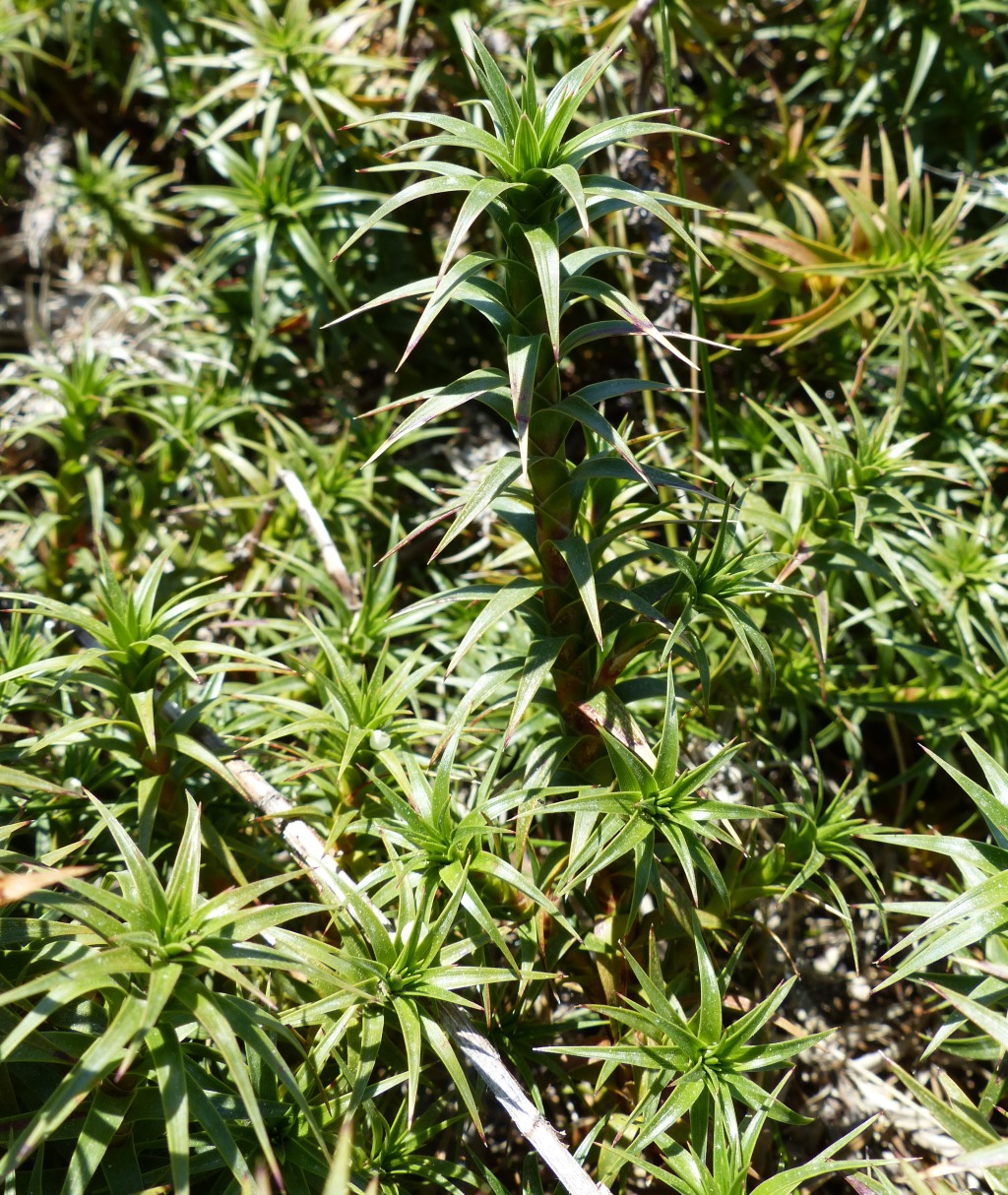Dracophyllum continentis
(B.L.Burtt) S.VenterDense, much-branched shrub 0.5–1 m high. Older branches without prominent annular scars; old leaves or their remains persisting. Leaves erect to spreading, ovate-lanceolate to triangular, 1–4 cm long, 2–7 mm wide, flat to concave, concolorous; apex straight or decurved, shortly pungent-pointed; margins serrulate. Flowers in narrow spike-like panicles, 10–30 cm long; peduncle exserted 4–15 cm beyond leaves; inflorescence axis pubescent; lateral branches to 8 mm long; sepals 5, ovate, 2.5–3.5 mm long, obtuse to subacute; corolla creamy-white, 4–6 mm long; anthers oblong to broadly elliptic; filaments 2–4 mm long; nectary 0.5–1 mm long, style c. 1 mm long. Fruit c. 2 mm long; seeds c. 0.6–0.8 mm long. Flowers Dec.–Feb.
HSF, HNF, VAlp. Also NSW. Locally common in montane to alpine wet heathland near watercourses or bogs, usually associated with Sphagnum moss.
Albrecht, D.E. (1996). Epacridaceae. In: Walsh, N.G.; Entwisle, T.J., Flora of Victoria Vol. 3, Dicotyledons Winteraceae to Myrtaceae, pp. 464–509. Inkata Press, Melbourne.
 Spinning
Spinning